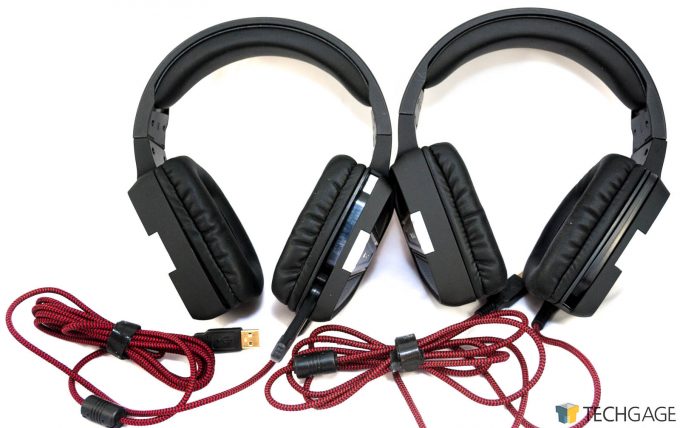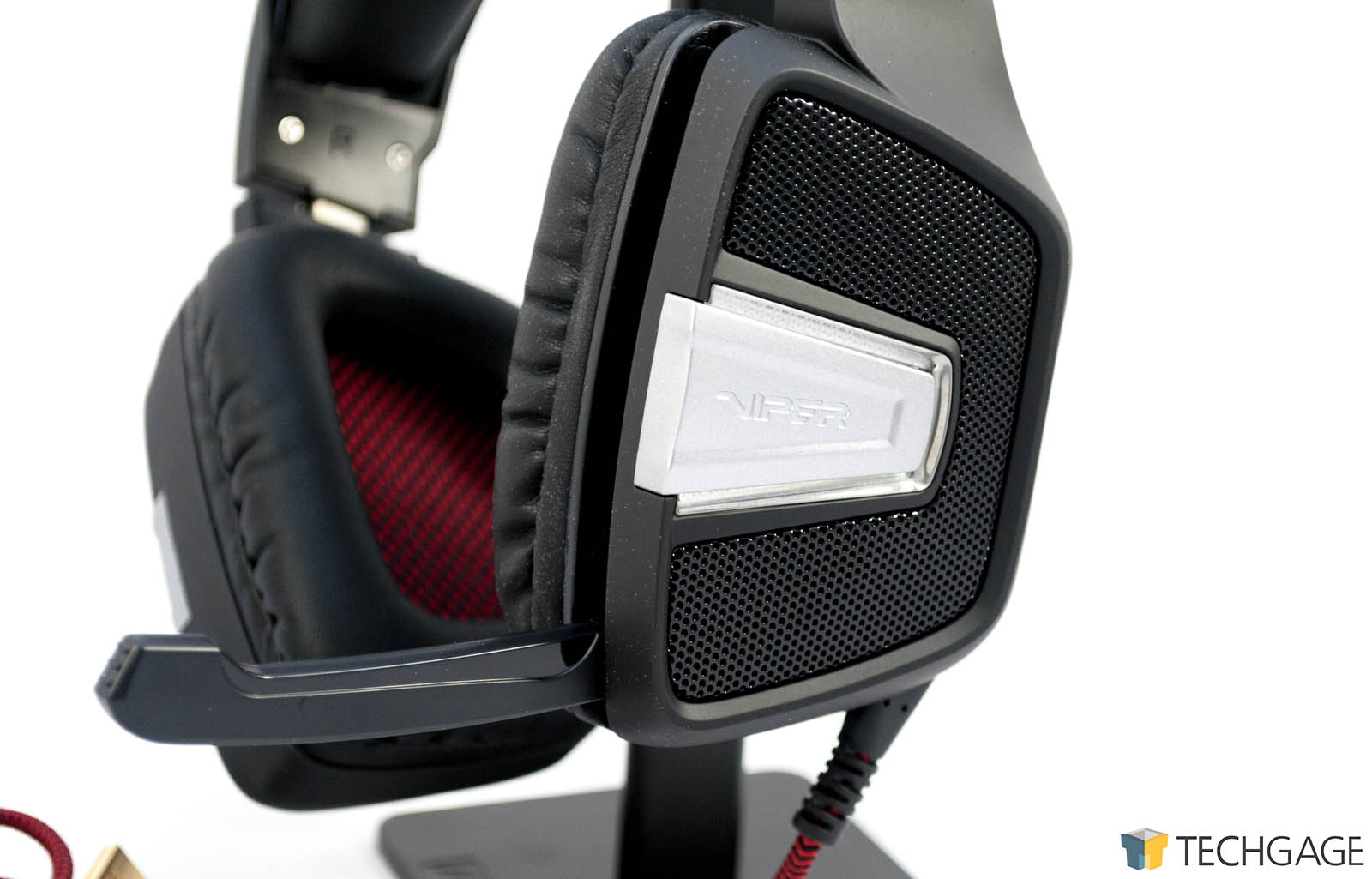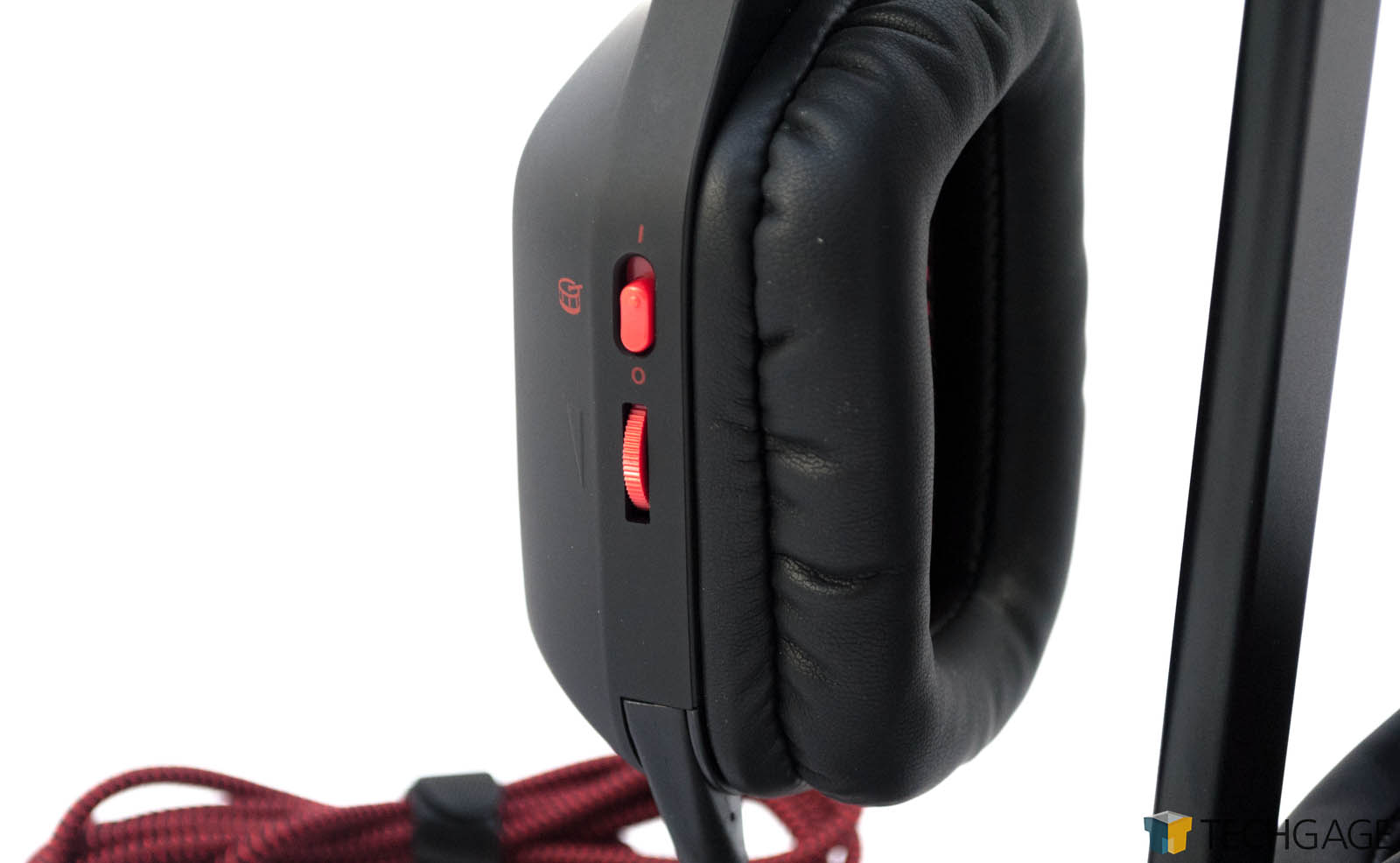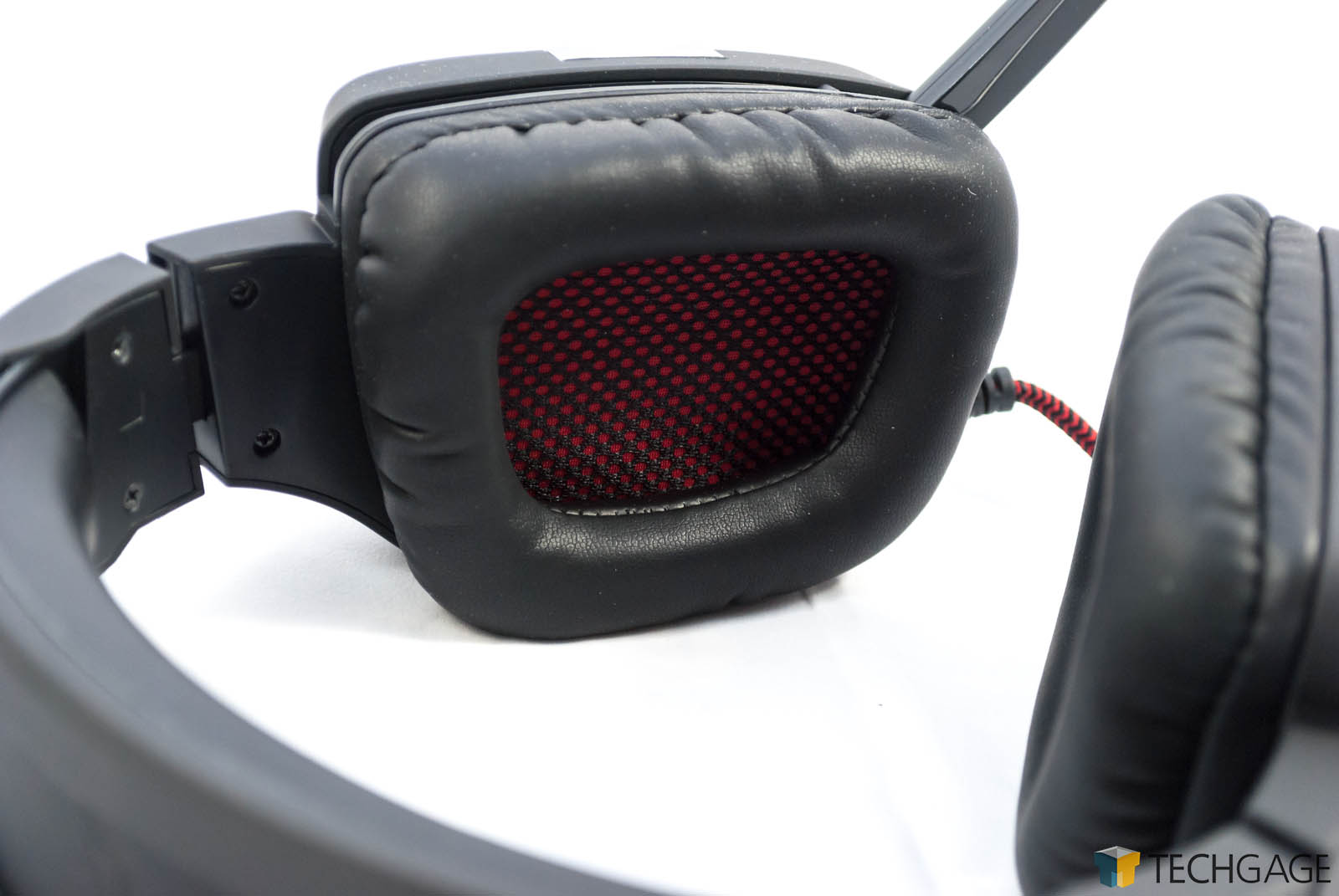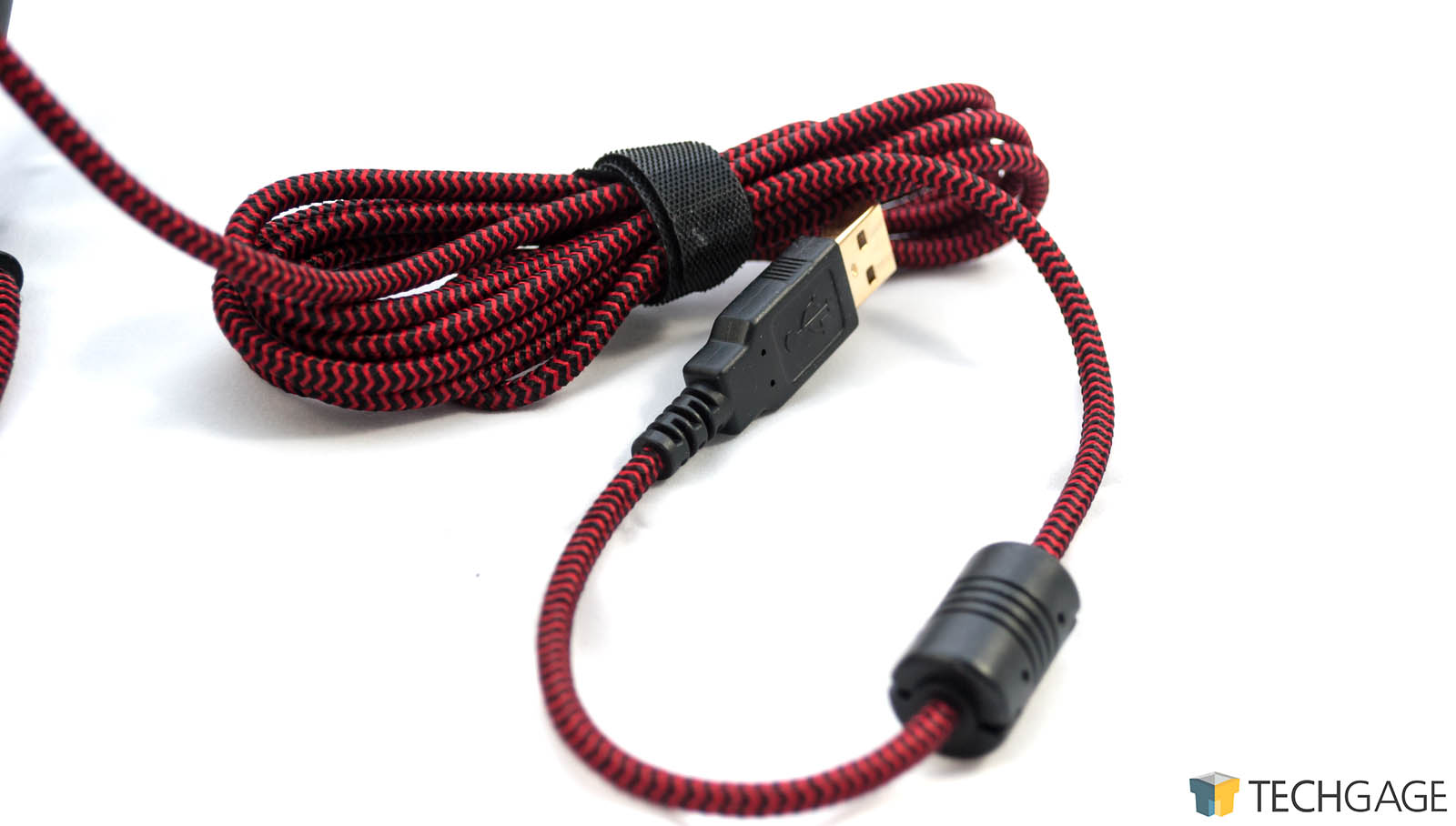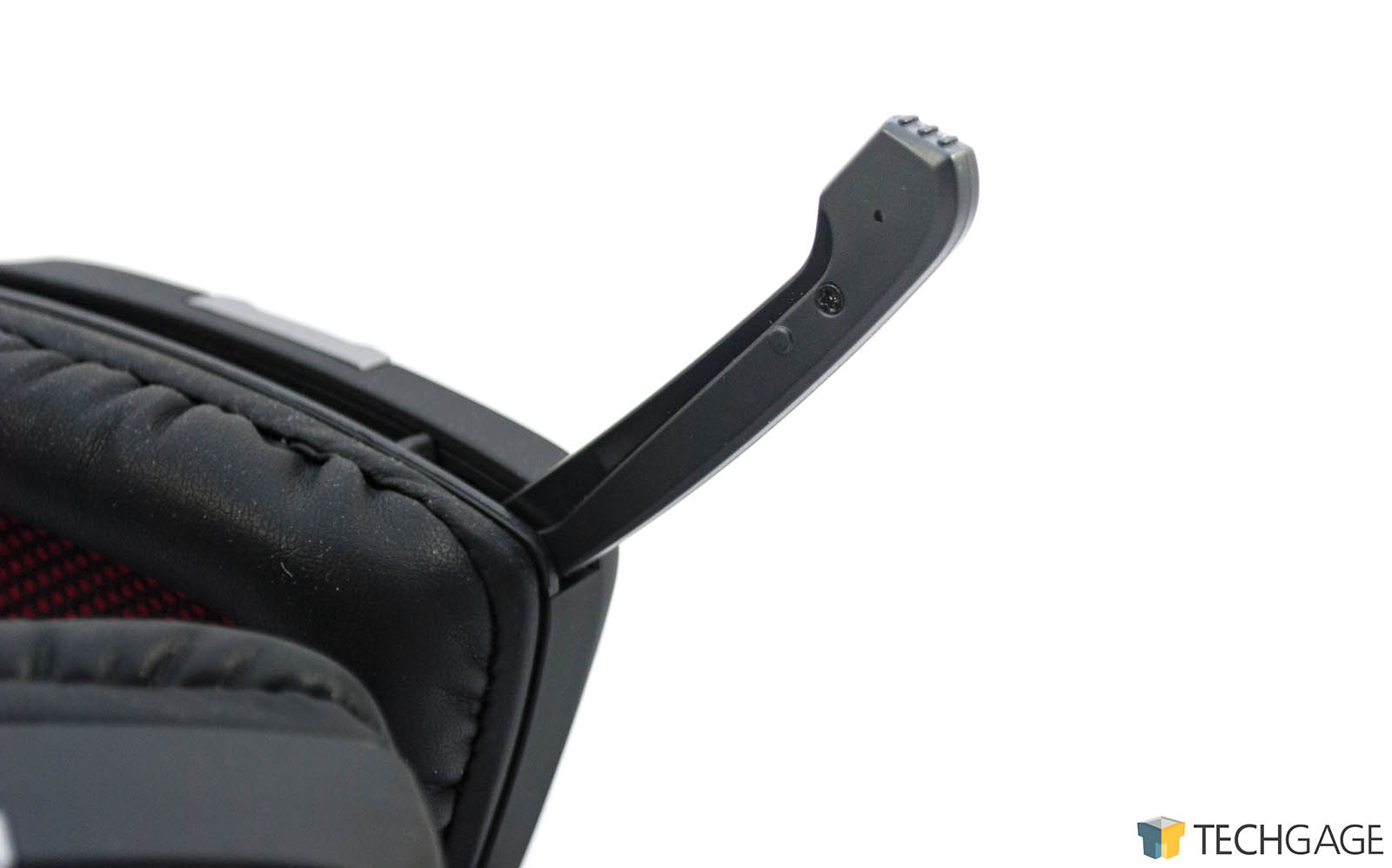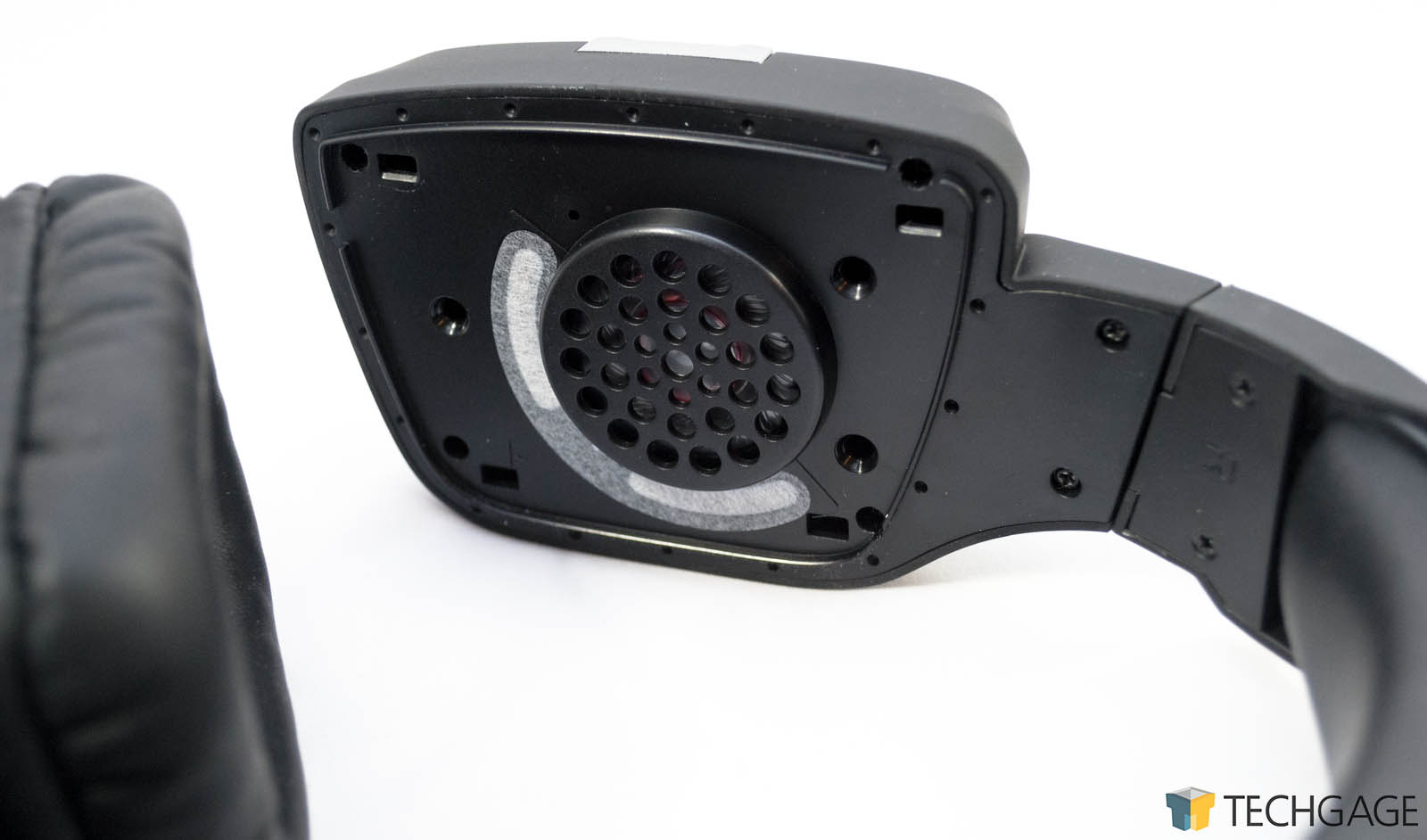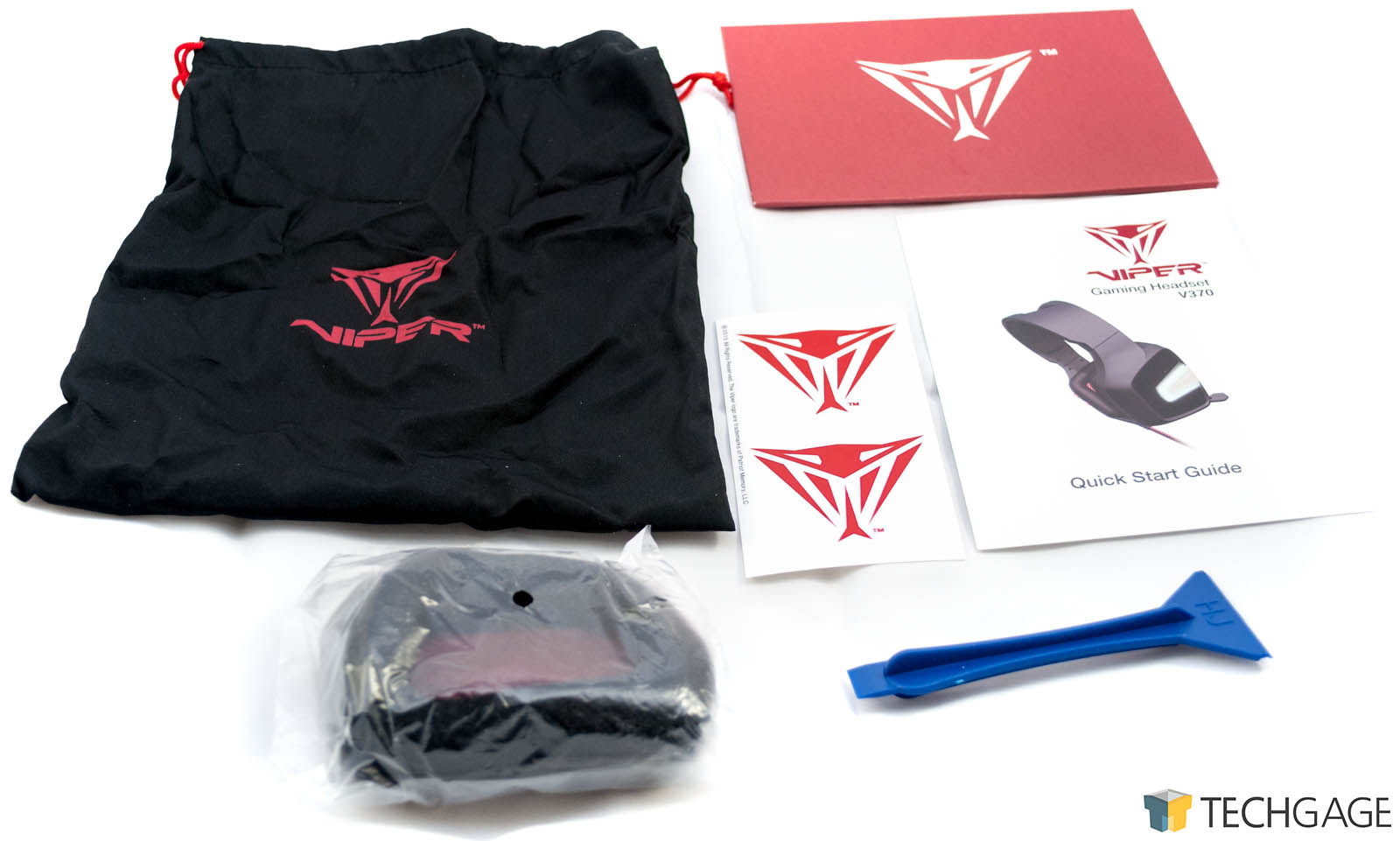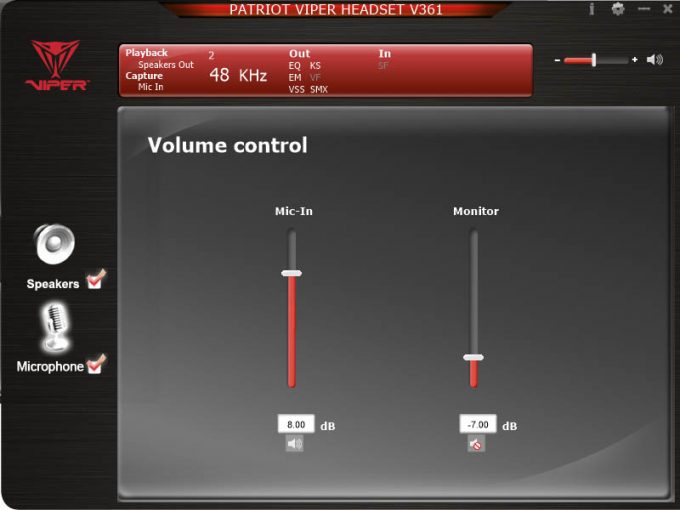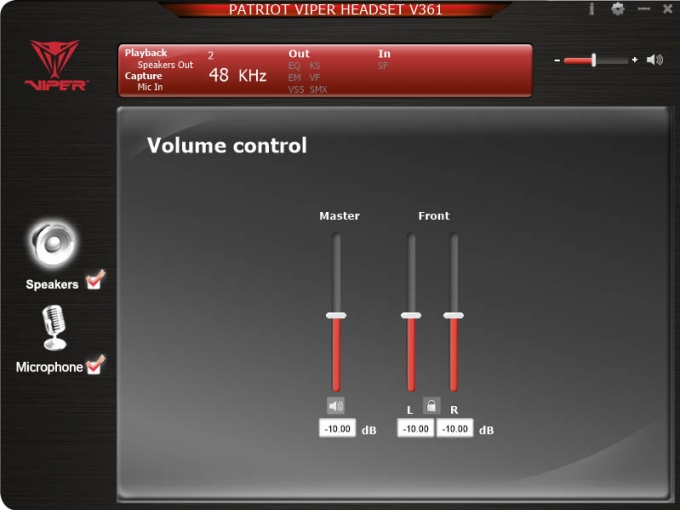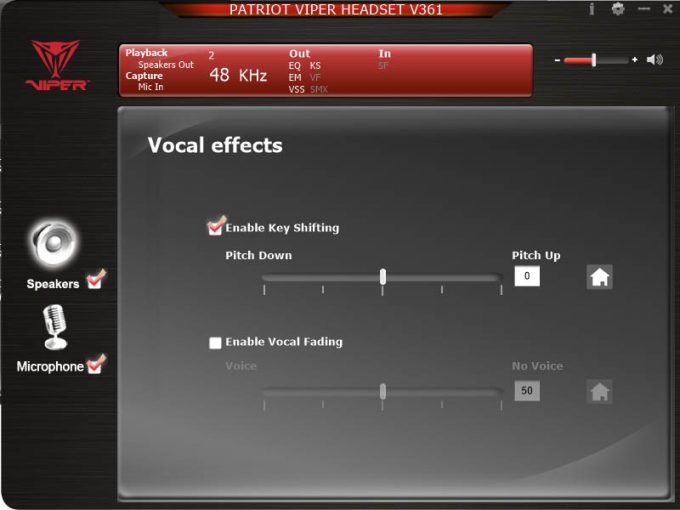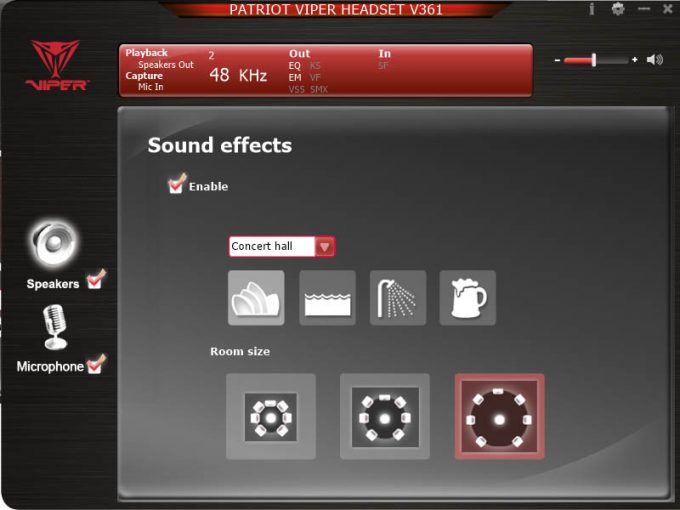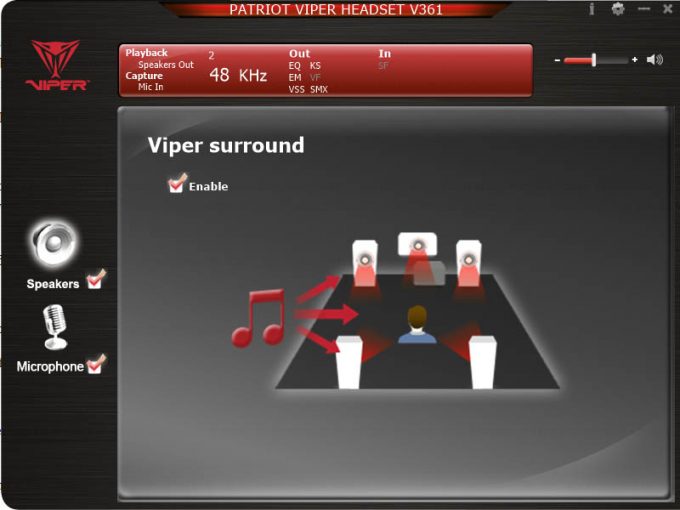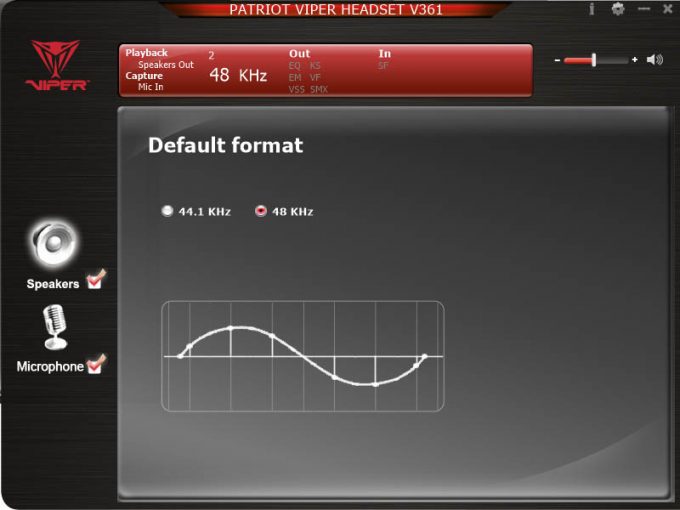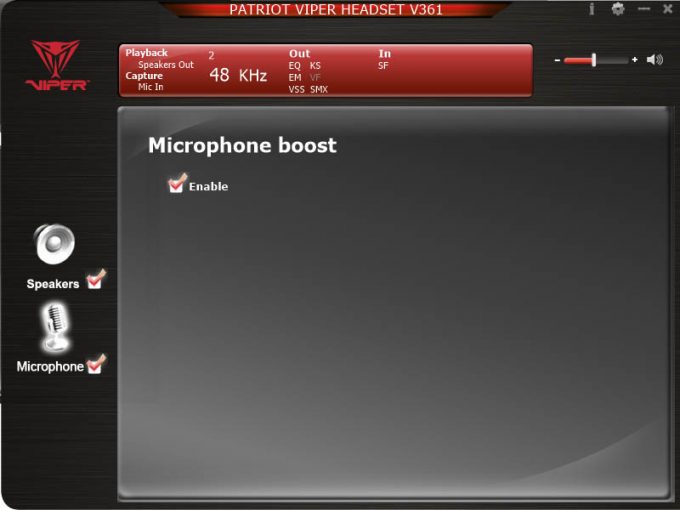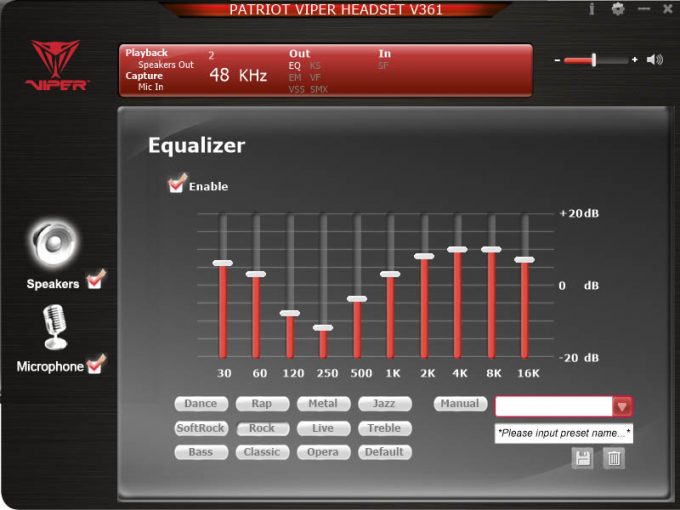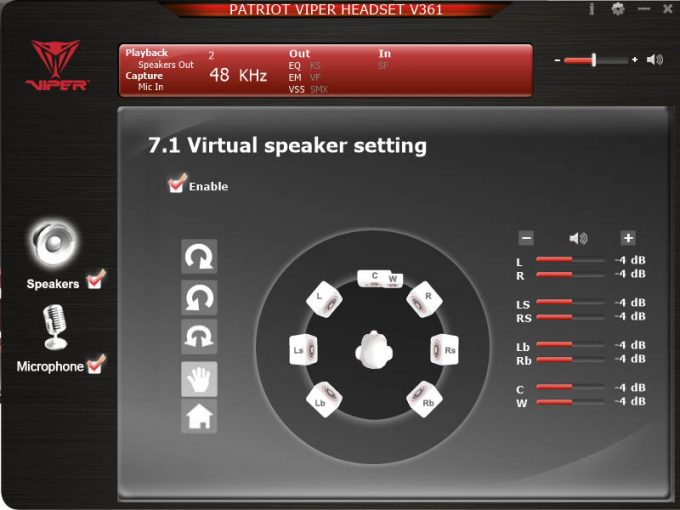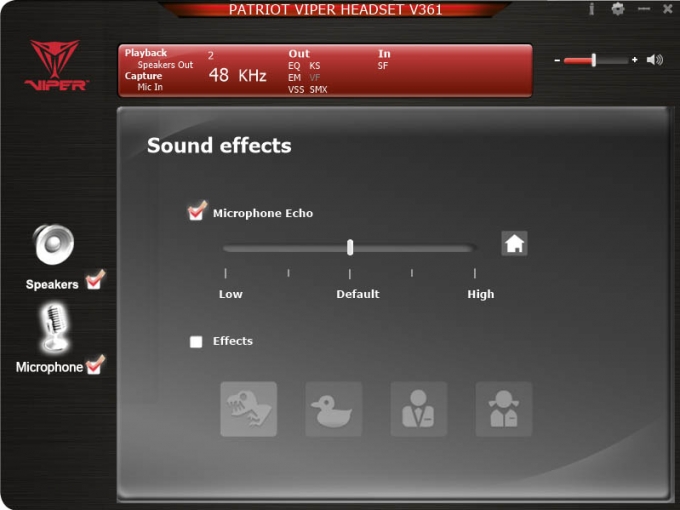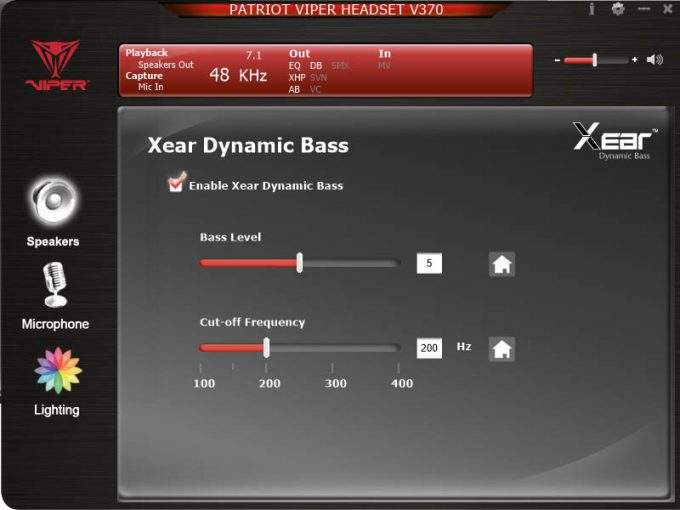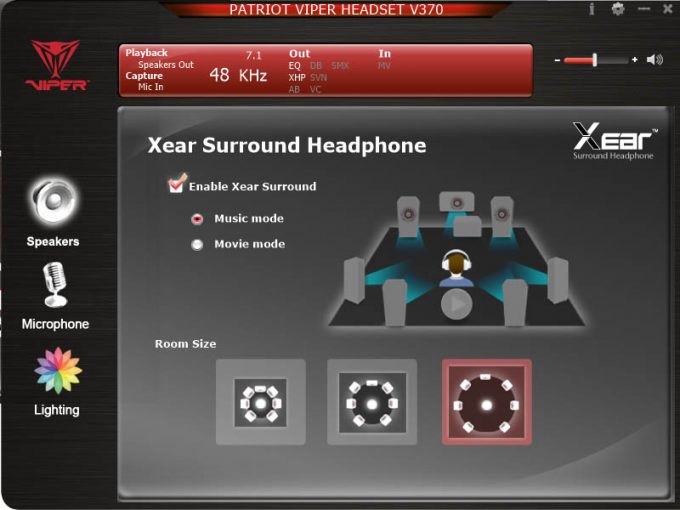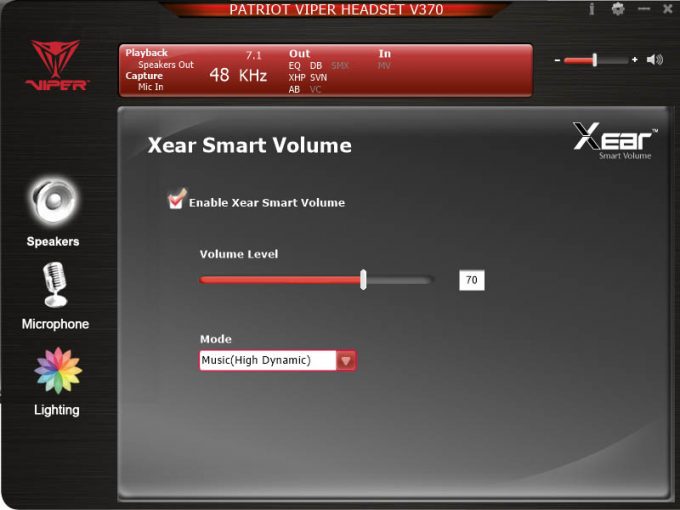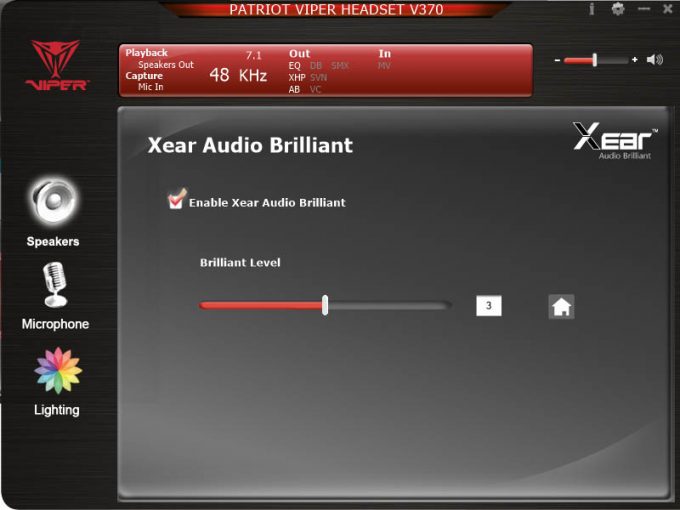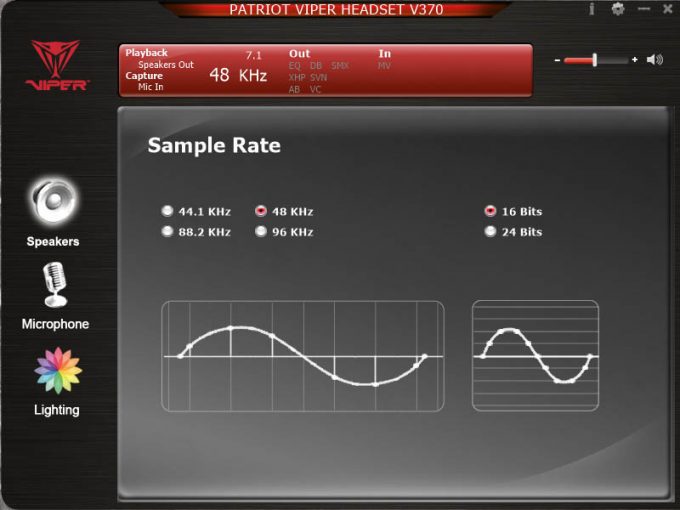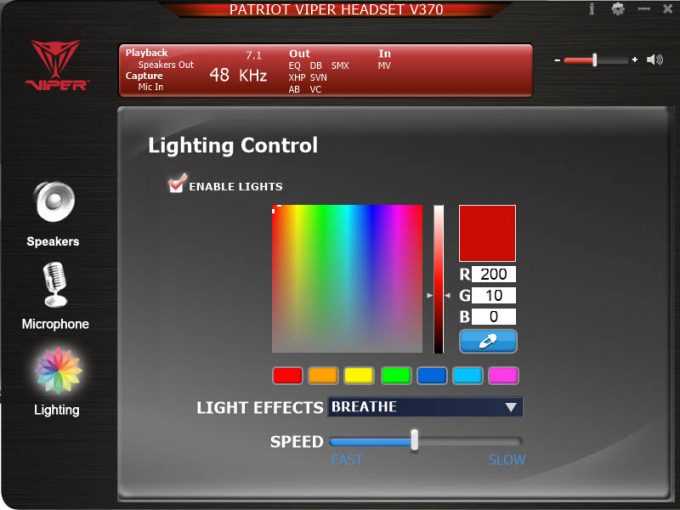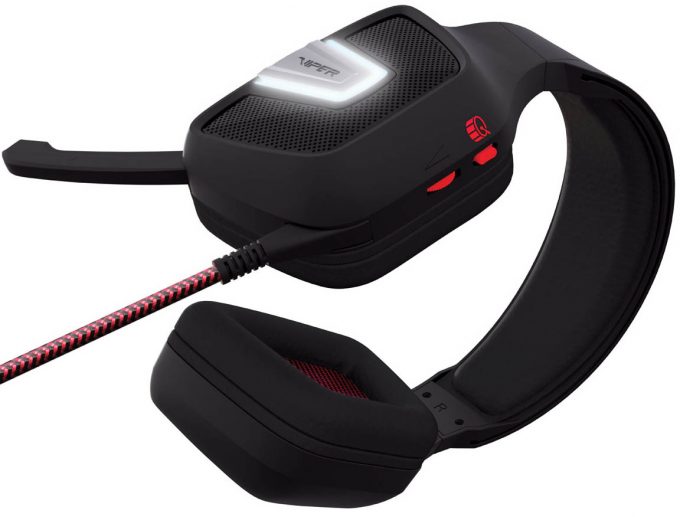- Qualcomm Launches Snapdragon 4 Gen 2 Mobile Platform
- AMD Launches Ryzen PRO 7000 Series Mobile & Desktop Platform
- Intel Launches Sleek Single-Slot Arc Pro A60 Workstation Graphics Card
- NVIDIA Announces Latest Ada Lovelace Additions: GeForce RTX 4060 Ti & RTX 4060
- Maxon Redshift With AMD Radeon GPU Rendering Support Now Available
Patriot’s Price + Performance Champions – A Quick Look At The Viper V361 And V370 Headsets

How often does a product force you into an attitude adjustment? Patriot’s V361 and V370 headsets have revealed themselves to be a pair of price and performance champs. The best thing? They prove that virtual surround sound doesn’t need to be pricey to be desirable. Let’s check them out.
They say all gamers care about is performance. It’s true whether they’re talking about their own performance or their gear’s.
Actually, I’d amend that a bit and say that gamers care about price and performance. You see, all too often, gear that’s branded as “gamer grade” often carries with it a price premium. What’s even worse is when the price hike doesn’t translate into improved performance.
Well, happily there are exceptions.
So, at the risk of spoiling things, it’s truly refreshing when really affordable gamer gear actually does perform well and doesn’t punish you or your wallet.
To prove this point, Patriot sent us a pair of 7.1 virtual surround sound headsets, the V361 and V370. The company prices the former at $49.99, and the latter at $69.99.
Here’s a look at both of them.
So… notice something about them?
Yep. It’s almost impossible to tell one from the other. In fact, if you don’t plug them into a USB port, it is impossible.
So, how are they different from each other?
Can we tell via a comparison of features? Just to prove a point, though, I’m withholding one feature from this list.
| Specs and Features | Viper V361 | Viper V370 |
| Weight | 385 g | 385 g |
| Dimensions | 22 x 10 x 25 cm | 22 x 10 x 25 cm |
| Speaker Freq Response | 20 Hz – 20 KHz | 20 Hz – 20 KHz |
| Impedance | 32 Ohm @ 1 KHz | 32 Ohm @ 1 KHz |
| Main Speaker Drivers | 40 mm Neodymium Magnet | 40 mm Neodymium Magnet |
| Sub-Drivers | 30 mm Neodymium Magnet | 30 mm Neodymium Magnet |
| Microphone Freq Response | 100 Hz – 10 KHz | 100 Hz – 10 KHz |
| Signal-to-Noise Ratio | 60 dB | 60 dB |
| Pickup Pattern | Omnidirectional | Omnidirectional |
| MSRP | $49.99 | $69.99 |
| OS Compatibility | Windows, Mac OSX | Windows, Mac OSX |
Nope. Other than the MSRP, they’re both still pretty much identical.
Now, before I spill the beans on how the V361 is different from the V370 (and why it costs $20.00 more), let’s take a visual tour. Just for laughs, with each photo, try to guess which of the two is in the photograph, OK? Flick through the gallery below to get an idea of things.
The mic pickup is on the end of a fold-down boom on the left ear-cup. The cable also attaches to the left ear-cup. Note the braided cable cover in red and black. While it is a bit rough-textured, there’s no doubting its quality. It doesn’t feel as though it will fray and get damaged any time soon.
The left ear-cup is also home for two controls: An on/off switch for UBR (Ultra Bass Response) and the headset’s volume control. How about a closeup of one of the speaker drivers? Incidentally, it’s very easy to remove the padded vinyl earcup covers with the provided tool. And there are spare cloth covers that ship with both of these headsets.
The speaker cover removal tool and the spare covers are all part of a fairly comprehensive accessories package. Also included are a quick-start guide, a carry bag for your headset, a pair of Patriot Viper logo stickers, and advertising material for other Patriot Viper products.
Indeed, everything we’ve seen so far reveals that, other than in the pricing, there is no difference between these two Patriot Viper gaming headsets.
So what’s the story here?
As said at the outset, both the V361 and the V370 are virtual surround sound headsets. Perhaps there’s a difference in how they sound?
Since these both produce their surround sound effect through software, I had to go to Patriot’s website, search for the software package for the headsets, and download and install them onto my PC. Imagine my reaction, then, when I discovered these headsets actually require different software.
Now why would that be?
Logically, the only reason is that each piece of hardware + software combination can do something the other cannot.
Let’s have a look at the V361‘s software first.
There are all the usual functions you’d expect from virtual surround sound headsets. You can set volume levels (L and R paired or individually – spiffy!) and output sample rate (either 44.1 or 48 KHz), choose from one of twelve EQ presets, and tweak output frequencies to taste via a 10-band EQ. You can also choose from one of four virtual environments – these vary in their reverb, echo, and delay of the outputted sound, simulating how various location types affect the sound you hear.
The robust software also gives you virtual room size and speaker location control. Finally, the Vocal Effects allows for pitch-shift control (so you can sound like either Barry White or Mickey Mouse, should you so desire) and vocal fading (which can boost or completely cut vocal sounds).
As feature-filled as the V361’s software is, the V370‘s is even more so. For two apparently identical pieces of hardware, you might have expected their software components to have been identical as well. However, this is where you see the differences between the two.
Since both headsets share most of their hardware, most of the software functionality and capabilities are the same. However, the V370 software package also includes additional sample rate options (88.2 and 96 KHz) and bitrate options (16 or 24 Bits). Also notable are a host of Xear-branded controls for virtual room size manipulation (Xear Surround Sound), vocal frequencies tweaks (Xear Audio Brilliant), bass output (Xear Dynamic Bass), overall sound dynamic range presets (Xear Smart Volume), and further voice enhancements via improved clarity and noise suppression (Xear Voice Clarity).
Then there’s that one other feature that defines the single biggest difference between the V361 and the V370: Lighting Control. You see, the V370 is an RGB LED-equipped headset.
Lighting control gives you great control over not just the coloration of the lighting, but also the type and speed of lighting effects you may want to have.
Now that we’ve had our visual tour of these two Patriot Viper headsets, let’s find out how they perform.
Performance Testing
Since the V361 and the V370 are essentially identical bar the lighting upgrade on the latter headset (and the more feature-filled nature of its software), most of the comments in this part of the review will apply to both headsets. I’ll call out any specific differences between them as they occur.
One of the design decisions Patriot had to make was how to connect these headsets to your PC. One option was to use a pair of 3.5mm audio connectors – one for the headphone out, one for the mic in – then package the surround sound processors via an in-line module. We’ve seen this kind of design before in various other headsets.
Patriot, however, opted for a full-size USB connector for both the V361 and V370. This automatically eliminates the possibility of using them on mobile devices or some consoles.
Although this is a bit of a downer (for this writer, at least), the performance characteristics for these headsets makes up for the disappointment.
Per my standard practice, I tried these out first without installing the software packages. As stereo headsets, they performed well. The sound signature is full and robust; there aren’t any annoying peaks at either the high or the low end of the frequency range. The balanced sound signature works equally well for music, movies, and games.
As pleasing as they were sans their software packages, these headsets really do come alive once the software comes into the mix. While the Patriot software doesn’t quite have the visual pizzazz as, say, Logitech’s own, it more than makes up for the lack of visual pop with really tight integration with the hardware and, therefore, a corresponding effect on performance.
It’s ridiculously easy to find settings for an optimized surround sound experience. I prefer to optimize the front channels, but if you want to boost the outputs for the simulated rear channels, it’s very easily done. I’m also not much of a tweaker of EQ settings – I like flat-response headphones myself – but Patriot’s software allows for noticeable changes in the sound signature, both with the EQ presets and with user-defined settings.
I was also surprised to (gasp!) enjoy the UBR rumble feature. When you have explosions in-game, you not only hear them; you feel them. And the effect actually adds a fun factor I didn’t expect to enjoy, to be perfectly honest.
The mic also works well. Although I didn’t test it in games (I’m not one to play multi-player), it did perform superbly in Skype. People on the other end of the line reported clear transmissions from my end.
Because I’m an old fuddy-duddy, I’m really not the target market for all the LED bling these headsets are equipped with. That does not recuse me from evaluating them on this basis. I do have to admit two things: 1) Although you won’t be able to see them when you’re wearing the headsets, the LEDs enhance the headsets’ aesthetics and 2) the RGB LEDs on the V370 are impressive in their ability to emit colors as defined in the software. Having said that, my tired old forty two year-old eyes are probably incapable of seeing all the fine gradients in color.
Let’s wrap things up.
Final Thoughts
It’s clear Patriot has a pair of winners in the V361 and V370. Although they are, for all intents and purposes, identical, that only means that the end-user can’t lose with whichever headset they opt to buy.
In terms of performance, I’ve got to admit that these Patriot Viper headsets have me rethinking my biases against virtual (simulated) surround sound. I’m a self-confessed audio snob. I don’t have the budget to truly indulge in my snobbery, but if I did I’d really plunk down the coin for high-end audio.
I’ve never been truly satisfied with simulated surround sound solutions; in fact, surround sound headsets, as a concept, just don’t excite me. I’m a hardcore stereo fella, so if a set of cans claims to output more than just the left and right channels, I just don’t care.
But the Patriot Viper twins have forced me to reexamine my own prejudices. I’m unsure about what part of the hardware stew accounts for my attitude adjustment, but whatever it is the end result is a product that is very easy to recommend. Not only is the audio quality superb (whether or not the software packages are involved), but when you factor in the ultra-accessible price of admission ($49.99 for the V361, twenty bucks more for the V370’s RGB LEDs and more feature-packed software) there’s only one conclusion.
Patriot’s V361 and the V370 constitute a pair of price plus performance champions.

Patriot’s V361 and the V370 Headsets
Pros
- Smart aesthetics.
- Controls are within easy reach.
- High quality of construction and materials.
- Very good audio quality.
- Superb value – a performance-for-price champion.
Cons
- USB connection only.
- Incompatibility with mobile devices (because of lack of 3.5mm connector option).
Support our efforts! With ad revenue at an all-time low for written websites, we're relying more than ever on reader support to help us continue putting so much effort into this type of content. You can support us by becoming a Patron, or by using our Amazon shopping affiliate links listed through our articles. Thanks for your support!




